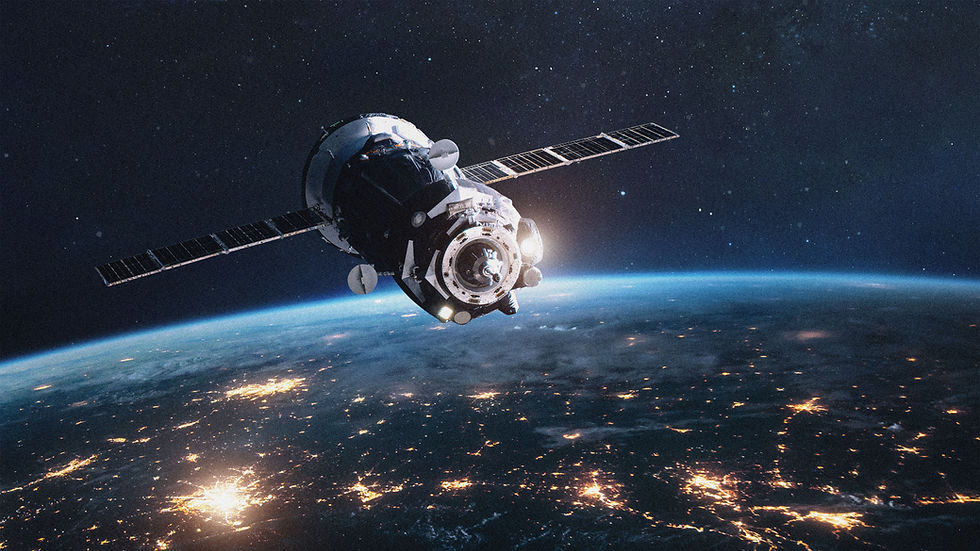More Than Allergies: How Lunar Dust is Dictating Future Space Travel
- Amanda Grodman

- Aug 17, 2022
- 3 min read
Updated: Jun 2, 2023
In recent years, discussions of lunar space tourism and other forms of public space travel have been rapidly orbiting the world. Progressive space exploration companies and other organizations geared towards the public predict that lunar tourism will be accessible shortly, with new startup companies (along with SpaceX and NASA) promoting such travel by 2043. And while these trips would only be offered to an exclusive few, namely those able to spend several million dollars, risks when traveling such a long distance must be considered as space travel becomes a reality. Ultimately, one of these pressing risks, which has plagued NASA astronauts’ lunar capabilities since the first Apollo mission, is lunar dust–crushed up rocks and other particles–which causes severe damage to spacesuits and health when inhaled or ingested. With new stellar technologies propelling innovative space exploration, astronauts, roboticists, and researchers considering the health and safety of ordinary space-goers is essential–even if this means aiming for the stars.

The term “space dust” or “lunar dust” doesn’t sound so intimidating from a medical perspective considering dust on Earth will cause congestion, at most. Yet the tangible effects of lunar dust paramount that of Earth’s soot, and the science behind it makes solving the issue a difficult task. Lunar soil is electrostatically charged due to solar ray exposure, cannot be naturally smoothed out like that on Earth due to a lack of erosion on the moon, and is prone to building up in large quantities. Consequently, any activity can cause a disturbance and lead to dust swaths swarming astronauts or rovers that probe. Jack Shmitt, a retired astronaut and geologist who traveled on the Apollo 17 mission, recalls the distinct smell of the dust, along with the health effects–where his swelled nasal chambers caused a case of “extraterrestrial hay fever”. In controlled experiments where artificial human lungs were exposed to a mock lunar dust, an out-of-this-world amount (nearly 90%) of cells were destroyed, entailing that realistic settings could increase cancer risks or cause other pulmonary diseases. Evidently, this issue that many in the space field have strove to tackle reflects why a delay in space tourism and space colonization is entirely plausible, for the better.

Attempts to solve this concern haven’t been sparse, including those made by NASA, who first brought light to lunar dust on the Apollo 11 mission. The Lunar Surface Innovation Initiative (LSII) was recently formed under NASA to develop different technologies, from spacesuits to rovers, in efforts to make probing with dust safe and proactive. Such technologies will be tested in 2023, entailing that future missions and projects will be better equipped to take on the rough terrain. And for those entering college or forming startup companies, the LSII is interested in forming partnerships to tackle this pressing issue due to its wide applicability in all realms of space entrepreneurship and aeronautics. As NASA elaborates, lunar soil isn’t only paramount to moon-bound exploration, but also future endeavors on Mars, which has frequent dust storms. Lunar tourism may not be tangible at this time, or even in the near future, because of this pressing issue–but hopefully space colonization will one day be written in the stars.

In this episode of “Let’s Go to Space: BLUESKY Learning,” Episode 74: Current Aerospace Research from the Labs of University of Central Florida, we’re joined with Tarek A. Elgohary, an assistant professor in UCF’s mechanical and aerospace engineering department and the director of the Astrodynamics and Space Robotics Laboratory. Dr. Elgohary has tremendous experience in the aerospace field, from exhibiting a postdoctoral research associate title at Texas A&M to attending the Department of Mechanical and Aerospace Engineering at the University of California, Irvine, as a visiting scholar. He discusses the interdisciplinary collaborations in the robotics and aerospace fields at UCF, along with how space situational awareness applies to all missions near and far. Learn more about Dr. Tarek A. Elgohary, along with the pressing issue of lunar dust, or visit our other weekly podcasts to hear from other speakers, by clicking the link above. Also make sure to check out our website to learn more about becoming a member of the Aerospace and Innovation Academy, where you can join us in our quest to go to space.




Comments